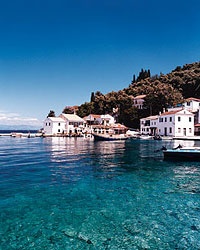 © Roy Zipstein Best Places to Stretch the Dollar
The dollar may be down, but it’s not out. Here’s where—and how—to make the most of yours.
© Roy Zipstein Best Places to Stretch the Dollar
The dollar may be down, but it’s not out. Here’s where—and how—to make the most of yours.
Remember the days when flashing a few greenbacks—even singles—made you look like a big shot overseas?
Alas, those aren't these days. In Western Europe, one euro costs you nearly $1.50, and in Great Britain, the pound now costs a whopping two bucks. "A subway fare in London that used to cost you $6 is now almost $8.50," says Bill Maloney, VP and COO of the American Society of Travel Agents. "It makes you recalibrate your thinking when traveling—even about how much a pint of beer will cost you."
Plus, with the dollar showing the unattractive tendency to keep dipping, American travelers run the risk of a "double shock," Maloney says. "Your hotel room may be $300 when you booked it at home, but when you're there and charge it on your credit card, you may come back and find on your bill that the exchange rate that week made it $330 a day, plus you'll pay exchange fees."
See 10 great destinations where you can stretch a weak dollar.
It's enough to make globetrotters start pondering vacations to their local state parks. The dismal dollar situation isn't that bad, however, when you look at the big picture—in fact, you can argue that road-tripping stateside is a worse deal. "It's all relative," says Frank Morgan, CFO of AMT American Express Travel in Los Angeles. "Gas is near $4 a gallon in the States, and the euro is $1.50, but two years ago gas here was only $1.70 and the euro was $1.10."
In other words, don't tuck away your passport and that nifty electrical converter for your hair dryer. Travel professionals agree that there are some big—and easy—ways travelers can minimize the impact of the weak dollar. Plenty of countries outside of Western Europe offer an exchange rate more forgiving toward the dollar—in particular, countries whose currencies are somewhat pegged to the dollar, such as those in the Caribbean as well as those in Eastern Europe and Asia.
Really, you can get even more out of your dollar these days—even in Western Europe—if you just plan your trip right. Ironically, doing that boils down to one golden rule: buy American.
That's right, American. Countless U.S.-based tour companies and cruise lines offer trips abroad but are headquartered here, and therefore let you prepay your trip in U.S. dollars. "These companies negotiate rates well in advance and have locked in rates prior to the $1.50-to-1-euro current exchange," says Neal Kramer, president of Minneapolis-based Carousel Travel.
The best overseas value these days, travel professionals agree, is in the still-booming cruise industry—especially river cruising through Europe. "Europe has become the new Caribbean for the cruise industry," says Michael McNair, president of Alexandria, Va.-based McNair Travel Management. "You will find many of the newest ships in the fleet sailing European itineraries."
If you still count yourself as cruise-averse, you can look for package trips—some guided, some not—where you nail down a lot of costs up front. One great way is to look for packages offered by airlines, where airfare, hotel, airport transfers, and sometimes meals and activities are all included up front.
With packages, "you're prepaying in U.S. dollars for most of the inclusions that would kill you if done on your own—dinners, entertainment, admissions to sights, hotels, even VAT (Value Added Tax)," says John Frenaye of Annapolis, Md.-based Travels with Fred. He says he recently booked a "Harry Potter" tour of Scotland and England for a group of families. "The cost for the week was just under $3,000 per person," he says, "but priced independently it would have been equivalent to about $3,600—and a $600 savings per person is pretty significant for a family."
See 10 great destinations where you can stretch a weak dollar.